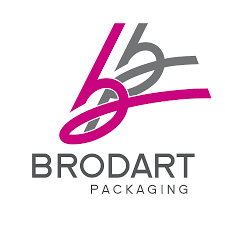ADEME project N°1001C0053
Coordinator : Brodart Packaging
Period: January 1er, 2011 - June 30, 2014
Partners : Brodart Packaging ; LNE ; ITERG ; INRA\UMR GENIAL 1145 ; CNAM\ laboratoire PIMM
Background and objectives
The use of renewable resources and the production of biodegradable materials are relevant solutions for reducing the ecological impact of the plastics industry. There is thus a demand for eco-responsible products on the market, provided they deliver performance equal to or better than the synthetic materials currently in use. One way of producing high-performance packaging films, which is widely used in the food sector, is to create multi-layer structures by advantageously combining the properties of different plastics. In this particular case, material recycling is difficult, so biodegradability is a relevant property. The CREABIOM project proposes the design of multi-layer biodegradable packaging based on poly(lactic acid) and poly(hydroxyalkanoates), helping to diversify the use of co-products from the oil industry and to promote the emergence of PHAs production from a carbon source derived from municipal and industrial wastewater treatment. CREABIOM is part of a highly competitive international dynamic, providing both an innovative eco-designed solution and an economically viable one.
Main results
The Creabiom project aimed to tackle these issues with the following stated objectives:
- Objective 1: valorization of oil mill co-products as additives
- Objective 2: manufacturing PLA/ PHAs multilayer materials
- Objective 3: improve mechanical and barrier properties using multilayer material
- Objective 4: guarantee and assess food safety and quality/biodegradability/ecological impact and industrial feasibility.
A screening of the various co-products from the oil mill led to the selection of vegetable oil deodorization condensates as the most promising product family for improving the mechanical properties of PLA. The use of deodorization condensates enabled an increase in PLA ductility from an elongation at break of around 5% for unformulated PLA to a value of'approximately 200% elongation at break for an optimized plant composition and source. This major gain in PLA ductility was accompanied by the maintenance of a high glass transition, so that at use temperature PLA maintains its barrier properties and the rigidity of a glassy polymer.
Work on the formulation of PLA/oil mill products/PHBV blends has resulted in a polymer film demonstrator with mechanical and thermal properties relevant for use in food packaging. At the same time, this material enables the recovery of co-products from the oil industry and provides an outlet for PHAs produced from carbon deposits present in municipal and industrial wastewater.
The scale-up study of the most promising formulation validated the possibility of implementation on industrial equipment, printability and validation of the film's potential for food applications. The regulatory analysis of food safety demonstrated the film's suitability for food contact with fatty food products and cold-preserved dairy products. The film had no impact on the organoleptic quality of foodstuffs. Finally, the biodegradability of the formulation was demonstrated in accordance with standard EN 13432.
.Scientific production and patents
Two theses, patent filed March 4, 2014 (FR1451772)
Useful links
Partners




